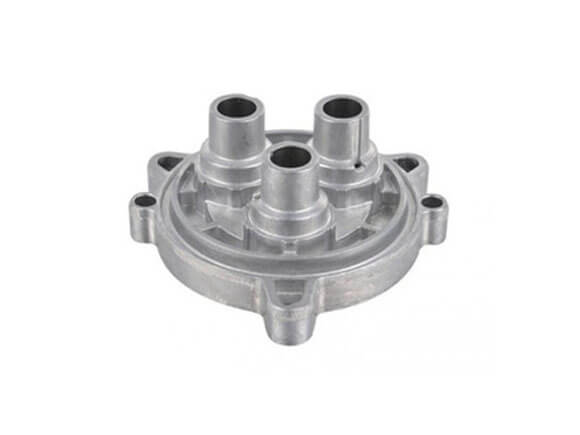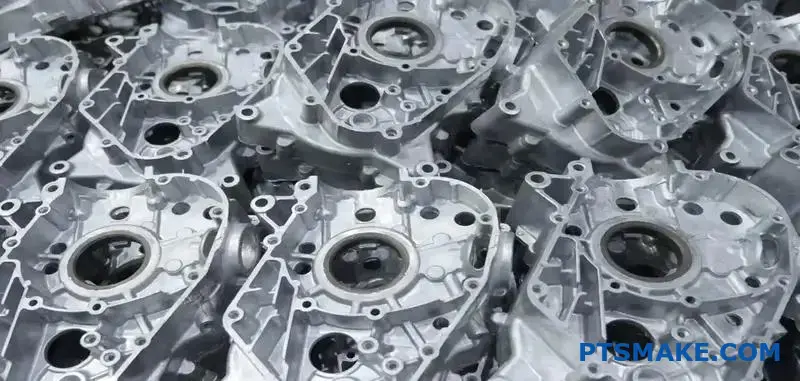Environmental Impact of aluminum casting and Why It Matters
Comprehending Aluminum Casting: A Comprehensive Overview to Its Benefits and Applications
Aluminum casting is a process that changes liquified aluminum right into solid kinds via various strategies. This technique provides notable benefits, such as lightweight strength and deterioration resistance. It locates applications in various markets, mirroring its adaptability. Nevertheless, recognizing the ins and outs of aluminum casting and its ideal practices can substantially influence the quality of the final item. Checking out these elements exposes truth capacity of aluminum casting in modern manufacturing.
The Fundamentals of Aluminum Casting
Aluminum casting is a production process that changes liquified aluminum right into strong items via numerous techniques. This procedure starts with heating aluminum until it reaches its melting factor, allowing it to move right into molds. There are several approaches of aluminum casting, consisting of sand casting, pass away casting, and financial investment casting, each appropriate for various applications based on style complexity and production volume.
In sand casting, molds are formed using sand, offering flexibility for detailed forms. Die casting includes requiring liquified aluminum right into a steel mold and mildew under high pressure, resulting in exact and repeatable parts. Financial investment casting, on the other hand, utilizes a wax pattern that is covered with ceramic to produce detailed elements.
After the aluminum cools and strengthens, the molds are eliminated, exposing the completed products. This casting procedure is essential in numerous sectors, including auto, aerospace, and consumer items, allowing the production of light-weight and long lasting components.
Benefits of Aluminum Casting
One of the vital advantages of aluminum casting depends on its capacity to generate lightweight yet strong parts. This unique combination makes aluminum an ideal choice for different sectors, consisting of automobile, aerospace, and customer items. The inherent rust resistance of aluminum also enhances the resilience of the cast components, lengthening their lifespan and minimizing the demand for upkeep.
In addition, aluminum casting enables complex geometries and detailed styles, which can result in more efficient and aesthetically pleasing products. The material's exceptional thermal and electrical conductivity even more broadens its applications, specifically in electronic devices and heat exchangers.
Moreover, aluminum recycling is very reliable, contributing to environmental sustainability and reducing manufacturing prices. Overall, the advantages of aluminum casting placement it as a functional and sensible remedy for makers seeking to maximize performance while decreasing weight and source use.
Usual Approaches of Aluminum Casting
While different strategies exist for aluminum casting, each technique offers unique benefits customized to particular applications. One of the most usual methods consist of sand casting, die casting, and investment casting.
Sand casting, known for its flexibility, makes use of sand molds to produce complex shapes and is ideal for both huge and little production runs. Die casting, on the other hand, uses high-pressure shot of liquified aluminum into steel molds, resulting in smooth surfaces and accurate measurements, making it ideal for mass production.
Financial investment casting, usually described as lost-wax casting, entails developing a wax pattern covered with a ceramic covering. Precision aluminum casting. Once the wax is dissolved, molten aluminum is poured right into the tooth cavity, yielding complex layouts and superb surface area finishes
Each of these methods plays a vital role in the aluminum casting landscape, providing particular benefits that provide to differing production requirements and production scales.
Applications Throughout Industries
The convenience of aluminum casting techniques enables a vast array of applications throughout numerous industries. In the automobile field, lightweight aluminum elements improve fuel performance and efficiency, contributing to the growing need for electrical cars. Aerospace industries make use of aluminum spreadings for their strength-to-weight proportion, ensuring safety and sturdiness in airplane manufacturing.
The building and construction sector gain from aluminum casting via architectural aspects and architectural parts that stand up to corrosion and need minimal upkeep. In addition, customer electronic devices manufacturers use aluminum castings for real estates and structures, stabilizing aesthetic appeals with functionality.
In the aquatic field, aluminum spreadings are favored for watercrafts and marine devices due to their resistance to saltwater rust. In addition, the clinical area makes use of aluminum spreadings in surgical instruments and devices, guaranteeing accuracy and integrity. Generally, aluminum casting's versatility allows it to meet the varied needs of several markets, making it an essential manufacturing procedure.
Finest Practices for Successful Aluminum Casting
Successful aluminum casting relies upon a combination of cautious prep work, precise implementation, and detailed quality assurance. Initially, selecting high-grade aluminum alloys is essential, as they directly influence the casting's homes and efficiency. Proper mold and mildew layout is critical, assuring that it accommodates thermal tightening and decreases issues.
Throughout the melting procedure, preventing and keeping the proper temperature level contamination are vital to achieving a consistent alloy. Furthermore, using effective pouring techniques can improve the dental filling of molds, decreasing the likelihood of air pockets or additions.
Post-casting, executing complete evaluation approaches, such as visual analyses and non-destructive testing, ensures that flaws are identified early. Employing rigorous quality control actions throughout the process aids preserve consistency and dependability in the last products. By sticking to these finest techniques, producers can substantially enhance the success and efficiency of their aluminum casting operations.
Frequently Asked Concerns
What Precaution Should Be Taken During Aluminum Casting?

Just How Can Problems in Aluminum Castings Be Minimized?
Problems in aluminum spreadings can be decreased via careful mold layout, proper temperature control, ensuring clean steel, utilizing suitable pouring techniques, and performing comprehensive examinations to identify and attend to problems prior to settling the casting process.

What Is the Environmental Influence of Aluminum Casting?
The ecological impact of aluminum casting includes energy-intensive procedures, greenhouse gas discharges, and resource extraction worries. Nevertheless, innovations in recycling and lasting techniques can alleviate these impacts, promoting a much more environment-friendly technique to aluminum manufacturing.
Can Aluminum Casting Be Recycled?
Yes, aluminum casting can be website recycled efficiently. The reusing process requires substantially less power contrasted to primary aluminum production, making it an eco-friendly option that adds to source preservation and reduced carbon discharges.
What Are the Expenses Connected With Aluminum Casting Processes?
Expenses connected with aluminum casting processes include product costs, labor, equipment maintenance, energy intake, and mold construction. These elements can differ substantially based upon production range, complexity of layouts, and particular production techniques employed.
Aluminum casting is a procedure that transforms liquified aluminum into strong types through different strategies. Aluminum casting is a production procedure that transforms molten aluminum into strong things through various methods. While different methods exist for aluminum casting, each approach supplies unique benefits customized to details applications. The environmental influence of aluminum casting includes energy-intensive processes, greenhouse gas emissions, and source extraction issues. Prices associated with aluminum casting procedures consist of product costs, labor, equipment upkeep, energy consumption, and mold and mildew manufacture.